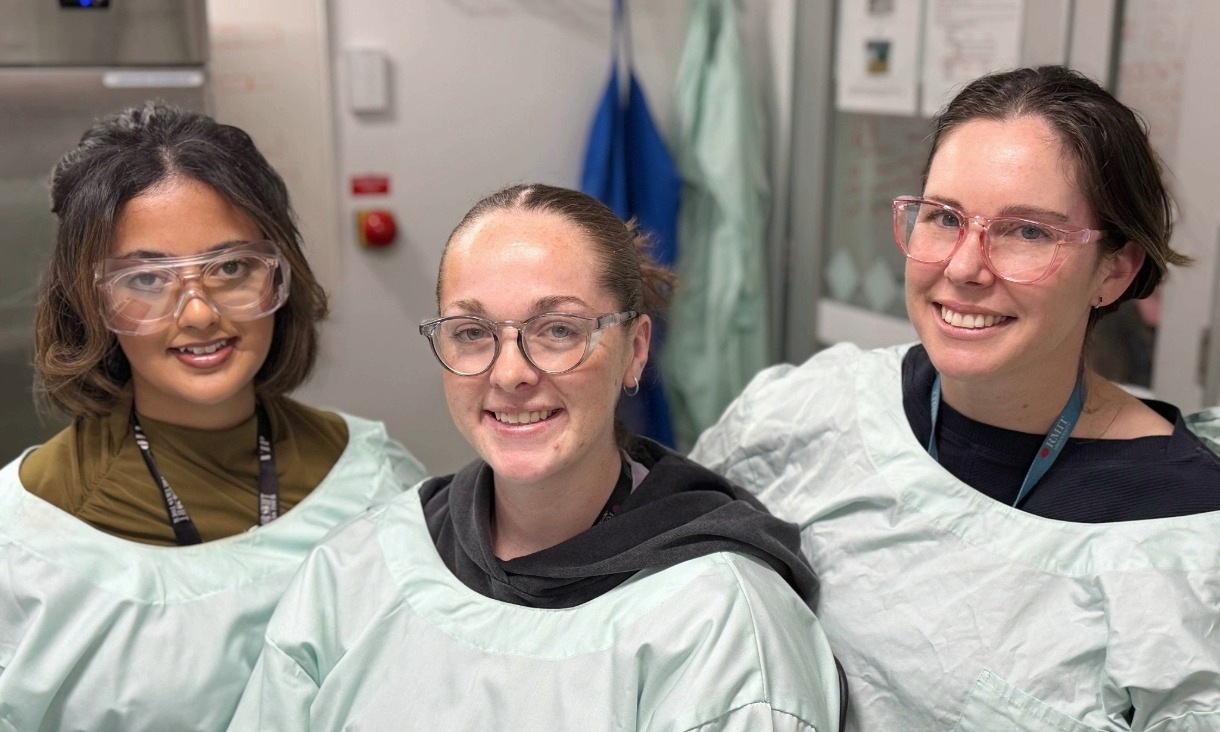Spintronic devices use a quantum property known as “spin” in addition to the electronic charge of conventional electronics.
It’s a new approach to the development of ultra-high speed and low-energy electronic devices with significantly enhanced functionality.
The new study published in Science Advances is a collaboration between RMIT and UNSW researchers in the Centre for Future Low-Energy Electronics Technologies (FLEET), an Australian Research Council Centre of Excellence.
The research focused on atomically thin ferromagnetic van-der-Waals (vdW) materials, which have recently emerged as effective building blocks for a new generation of spintronic devices.
The results show that vdW spintronics could provide devices with more functionality, compared with traditional spintronic approaches. Further research could generate devices with significant industrial applications.
Next gen spintronics
Ferromagnetism is the basic mechanism by which certain materials form permanent magnets or are attracted to magnets.
The researchers fabricated tri-layer devices – like a nanothin sandwich with a ferromagnetic material as the bread and non-magnetic graphite as the filling – and investigated the magnetic behaviour.
The “bread” in this case was a two-dimensional material known as Fe3GeTe2 (FGT), and the devices they fabricated are formally known as “vdW hetero-structures”.
Study co-author Sultan Albarakati, an RMIT and FLEET PhD researcher, said the team discovered a previously unseen mode of giant magnetoresistance (GMR) in the material.
“This reveals that vdW ferromagnetic hetero-structures exhibit substantially different properties from similar structures,” Albarakati said.
Magnetic power
The discovery of GMR in 1998 introduced the second fundamental property of the electron - its spin - into microelectronics.
The achievement was awarded a Nobel Prize nine years later, with GMR devices commercialised into the multi-billion dollar magnetic recording industry.
Until now, scientists have known of two GMR states - high resistance and low resistance. In the new study, the researchers found a third, intermediate resistance state.
This surprising result is contrary to previously held beliefs about giant magnetoresistance and suggests there may be different underlying physical mechanisms in vdW hetero-structures, with potential for improved magnetic information storage.
The three magnetoresistance states can also generate magnetic recording devices with higher density and lower power consumption, compared with normal two-state GMR devices.
Co-author Cheng Tan, also a PhD researcher with RMIT and FLEET, said the work had significant interest for researchers in 2D materials, spintronics and magnetism.
“It means that ‘traditional’ tunnelling magnetoresistance devices, spin-orbit torque devices and spin transistors may reward being re-investigated using similar vdW hetero-structures to reveal similarly surprising characteristics.”
Theoretical-experimental collaboration
The experiment’s detailed electron transport measurements were performed by a collaboration of researchers led by FLEET Chief Investigator Associate Professor Lan Wang (RMIT) and FLEET Deputy Director Professor Alex Hamilton (UNSW), using hetero-structures and devices fabricated by Wang’s team at RMIT.
Theoretical studies were led by FLEET Chief Investigator Dr Dimi Culcer (UNSW), while data analysis was undertaken by teams comprising both RMIT and UNSW researchers.
Electronic band structure calculations were led by Yunjun Zhao at the South China University of Technology, while the source study material was synthesised by a team of researchers from the Center for Quantum Materials and Superconductivity (CQMS) and the Chinese Academy of Sciences.
FLEET is a collaboration of over a hundred researchers, seeking to develop ultra-low energy electronics to face the challenge of energy use in computation, which already consumes 8% of global electricity, and is doubling each decade.
The study, “Antisymmetric giant magnetoresistance in van der Waals Fe3GeTe2/graphite/Fe3GeTe2 tri-layer heterostructures” (DOI: 10.1126/sciadv.aaw0409) has been published in Science Advances.
As well as support by the Australian Research Council, the authors acknowledge the support of the National Key Research and Development Program (China) and the Institute for Information and Communications Technology Promotion (South Korea).
A version of this story was first published by FLEET.







